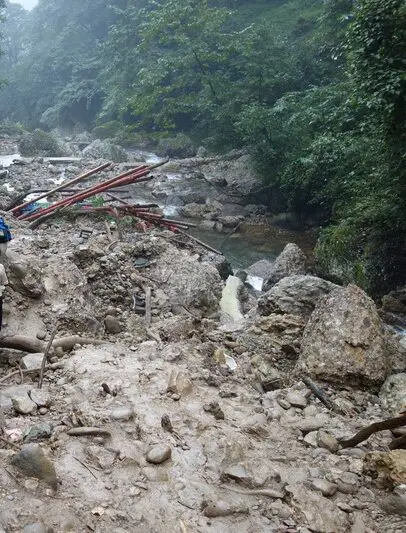The search for missing villagers has concluded following a landslide that buried at least 17 houses and resulted in 27 fatalities.
The calamity unfolded in Irshalwadi, a village situated in the western district of Raigad, India, during the late hours of Wednesday, July 19.
The landslide was triggered by incessant heavy monsoon rains, resulting in houses being swallowed by an enormous torrent of debris. The grim tally of fatalities stands at 27, with the victims including four children, while a concerning 78 people remain untraced.
Rescue teams worked tirelessly over a grueling four-day period, succeeding in extracting approximately 75 people from the hazardous terrain, while combing for any remaining survivors. Regrettably, these efforts were ultimately terminated.
The decision to cease search operations was publicly announced by Deepak Avadh, a representative of the National Disaster Response Force. He recognized the formidable circumstances and the dwindling chances of discovering more survivors.
The village’s remote location presented significant impediments for the rescue mission. The rescuers’ base camp was 90 minutes away by foot from the village. The absence of navigable roads and the presence of a large sludge-covered area rendered it impossible for heavy machinery like earthmovers and excavators to reach the site. Consequently, rescuers were left with no option but to employ basic tools, such as rods and shovels, for sifting through the wreckage. Sniffer dogs were also deployed in the hope of detecting signs of life.
The catastrophic event has transpired amidst ceaseless monsoon showers that have wreaked havoc in Maharashtra state, flooding local train stations and causing disruptions to services across various regions.
The region has experienced over 100 deaths in the recent three weeks as a result of unprecedented monsoon rains, leading to additional landslides and house collapses.
Scientists have attributed the escalating frequency of monsoons in India’s northern Himalayan region, resulting in recurrent landslides and flash floods, to climate change. Despite the significance of the monsoon season for rain-fed crops, it has become synonymous with large-scale destruction and fatalities in the region.











